
views
X
Trustworthy Source
Harvard Medical School
Harvard Medical School's Educational Site for the Public
Go to source
If you aren’t sure if you’re in ketosis, there are several types of definitive tests you can take, along with certain telltale signs and symptoms that can be on the lookout for.
Checking Your Ketones

Perform a ketone blood test to see if your ketone levels are at least 1.5 mM. Grab a blood testing device and install the lancet, or puncture needle, along with a test strip. Sanitize 1 of your fingertips, then prick the skin to collect a small sample of blood. Transfer the blood to the strip, and give the device a few seconds to process your blood. If the test states that your blood has somewhere between 1.5 and 3.0mM (millimollars), then you’re in ketosis. It helps to squeeze your fingertip slightly so you can collect more blood. You can purchase a blood testing device and strips online, or at a store that sells medical supplies.
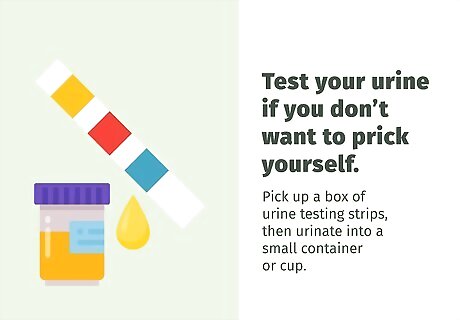
Test your urine if you don’t want to prick yourself. Pick up a box of urine testing strips, then urinate into a small container or cup. To start the test, soak the end of a test strip in the cup. Wait 15 seconds for the strip to absorb your urine and deliver an accurate result. At this point, compare the color of your test strip to the color key on your test strip box to see if you’re in ketosis. This test is more accurate than a breath test, but not quite as accurate as a blood test.
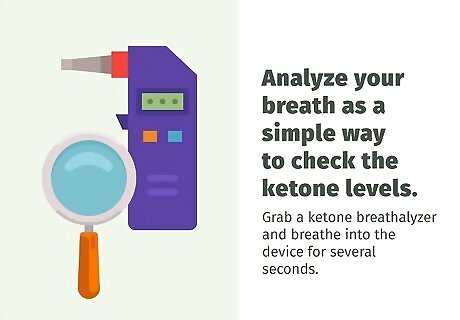
Analyze your breath as a simple way to check the ketone levels. Grab a ketone breathalyzer and breathe into the device for several seconds. At this point, wait for the device to give you a reading back. If it says that your ketone levels are between 1.5 and 3.0 mM, then you can know for sure that you’re in ketosis. You’ll need to calibrate or cleanse your breathalyzer before you use it. Check the manufacturer’s instructions for more specific guidance.
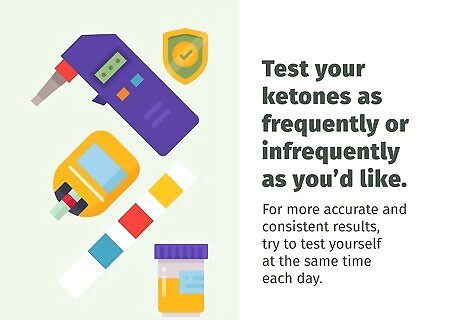
Test your ketones as frequently or infrequently as you’d like. If you’re really curious about whether you’ve reached ketosis, it may help to test yourself on a daily basis. For more accurate and consistent results, try to test yourself at the same time each day. You can also check your ketones after doing certain activities, like exercising or eating.
Recognizing Common Symptoms
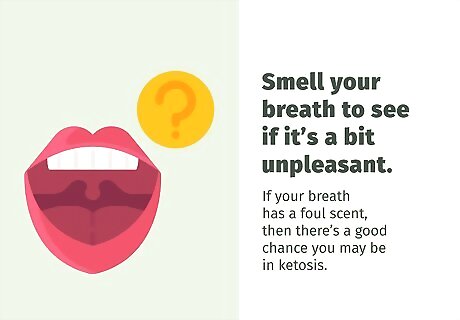
Smell your breath to see if it’s a bit unpleasant. Cup your hands around your mouth and nose and breath out with your mouth. Sniff the air and see if it smells bad. If your breath has a foul scent, then there’s a good chance you may be in ketosis. Consider the time of day when you check your breath. For instance, a morning breath test won’t be very conclusive when you’ve just woken up. This bad scent, also known as “keto breath,” often smells like nail polish remover.
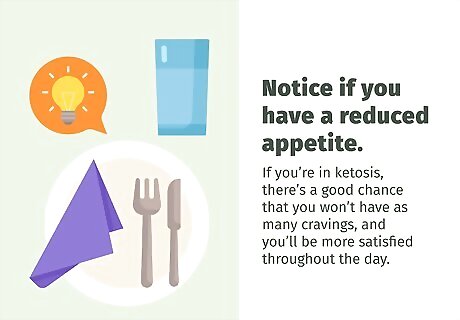
Notice if you have a reduced appetite. Think about how hungry you are between meals. If you’re in ketosis, there’s a good chance that you won’t have as many cravings, and you’ll be more satisfied throughout the day. Choose a check-in time with yourself to evaluate your cravings. For instance, every day at 3:00 PM, you can ask yourself if you feel hungry or not.
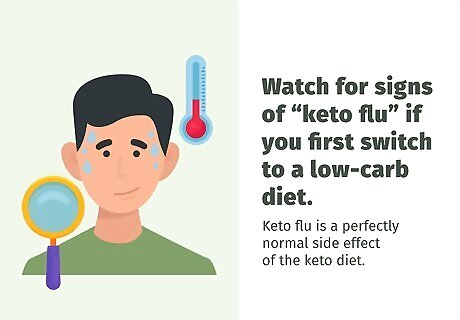
Watch for signs of “keto flu” if you first switch to a low-carb diet. Be on the lookout for a variety of unpleasant symptoms if you’ve just made the switch to a low-carb diet. As your body starts burning fat instead of carbs, you’ll likely feel extra tired, grumpy, and out-of-it. On the other hand, you may also experience insomnia, or find yourself going to the bathroom a lot. These are all normal signs that you’re possibly in ketosis. Keto flu is a perfectly normal side effect of the keto diet. You won’t be the first person to come down with it, and you definitely won’t be the last, either!

Check your energy and focus levels after a few weeks of dieting. Pay attention to your work ethic and mental state after you’ve adjusted to the keto diet. If your mind and thoughts feel clear along with your energy levels, there’s a good chance that you’re in ketosis.
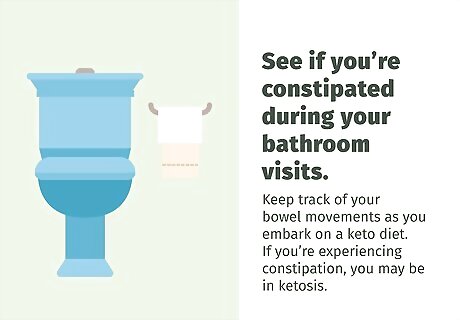
See if you’re constipated during your bathroom visits. Keep track of your bowel movements as you embark on a keto diet. On the keto diet, you’re cutting out some prominent sources of fiber, which can lead to constipation. If you’re experiencing constipation, you may be in ketosis.










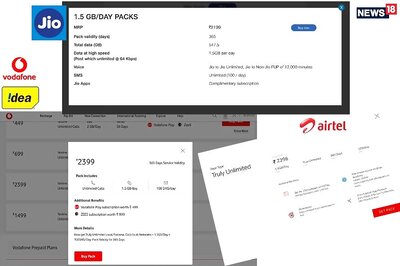






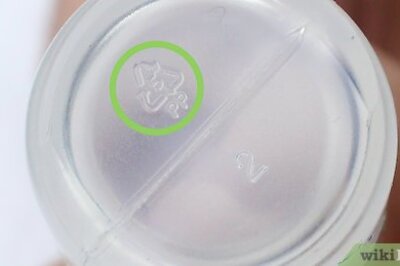

Comments
0 comment